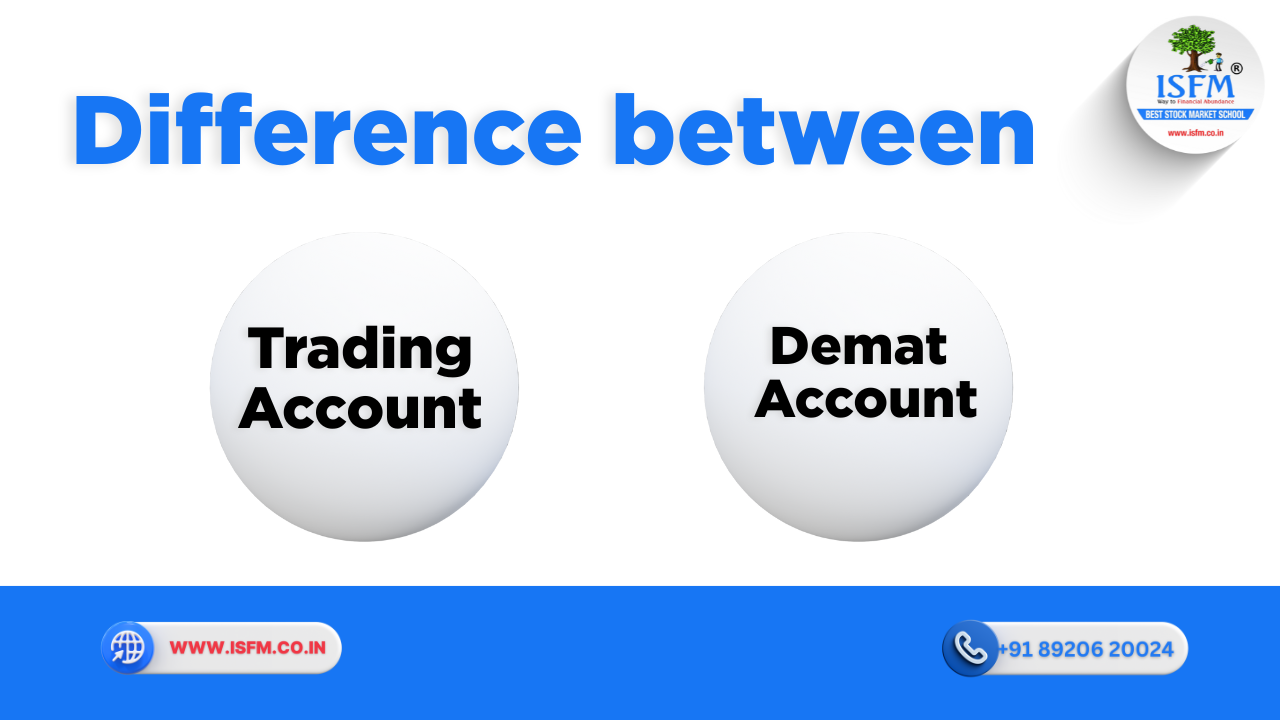Trading Account vs. Demat Account: What’s the Difference & Why Both Matter in Stock Market Investing

In today’s fast-paced world of digital investing, having the right accounts in place is essential to participate in the stock market. Two key components in this ecosystem are the trading account and the Demat account. Though they often appear similar to beginners, they serve very different functions.
In this blog, we’ll demystify the trading vs. Demat account debate by comparing their features, highlighting their importance, and explaining how they work together to streamline your investment journey.
What is a Trading Account?
A trading account is the interface you use to buy and sell financial instruments like stocks, commodities, and derivatives. It’s the execution arm of your investment activity, linking your bank and Demat accounts for seamless transactions.
Key Features of a Trading Account
- Live Market Execution: Instantly place market, limit, or stop-loss orders.
- Access to Exchanges: Trade on platforms like NSE, BSE, and even international markets.
- Margin Trading Facility: Use leverage to increase your market exposure.
- Data & Analytics: Integrated tools for technical charts, indicators, and real-time news.
- Order History Tracking: Review your trades, performance, and capital gains/losses.
What is a Demat Account?
A Demat account (short for Dematerialized account) is where your shares and securities are stored electronically. It replaces the old system of physical share certificates, offering a safer and more convenient way to manage your holdings.
Key Features of a Demat Account
- Secure Digital Storage: Eliminates the risk of loss, theft, or damage.
- Seamless Transfer: Move holdings to or from other Demat accounts easily.
- Automatic Corporate Benefits: Get dividends, bonus shares, and split shares directly.
- Nominee Facility: Assign a legal heir for easy transfer of assets.
- Multi-Security Holding: Store shares, bonds, ETFs, and mutual funds all in one place.
Trading Account vs. Demat Account: A Head-to-Head Comparison
| Parameter | Trading Account | Demat Account |
| Primary Role | Executes trades (buy/sell) | Stores securities electronically |
| Function | Facilitates market orders | Holds and manages investment portfolio |
| Regulating Bodies | SEBI, stock exchanges like NSE & BSE | NSDL and CDSL (India’s central depositories) |
| Usage Type | Active – frequent usage for trading | Passive – used during settlement and storage |
Why Do You Need Both?
Having both accounts is mandatory for stock market participation in India. Here’s why:
Importance of a Trading Account
- Enables buying/selling of shares.
- Provides real-time data for market analysis.
- Facilitates intraday and futures/options trading.
Importance of a Demat Account
- Digitally stores your investments securely.
- Automatically reflects changes from corporate actions.
- Reduces the paperwork and errors of physical shares.
How Trading and Demat Accounts Work Together
Here’s how these two accounts interact during a transaction:
- Placing an Order: You use your trading account to buy shares.
- Transaction Settlement: After 2 days (T+2), the shares are credited to your Demat account.
- Selling Shares: When you sell, the securities are debited from your Demat and the proceeds are sent to your bank account.
Also Read: Groww vs Zerodha: Which Investment Platform is Right for You?
Why These Accounts Are Vital for Every Investor
- Efficient Investing: Combined usage speeds up trade settlements and fund movement.
- Risk Management: Stop-loss orders via trading account & secure storage via Demat.
- Regulatory Compliance: Required under SEBI regulations for legal trading.
- Market Accessibility: Opens the door to retail participation in India’s booming equity markets.
Conclusion: Which Account Do You Need?
The answer is simple—you need both. A trading account is your execution platform, while a Demat account is your digital locker. Together, they ensure that your investing experience is secure, smooth, and compliant with Indian regulations.
Whether you’re a beginner or an experienced trader, understanding the difference between trading and Demat account is the first step to building a successful portfolio.



